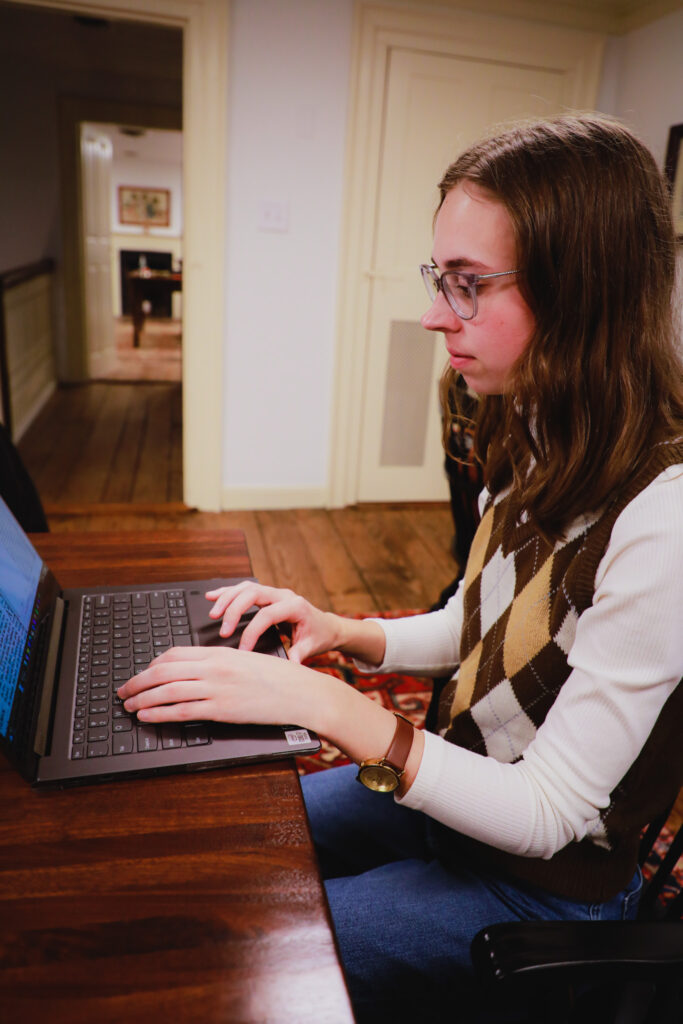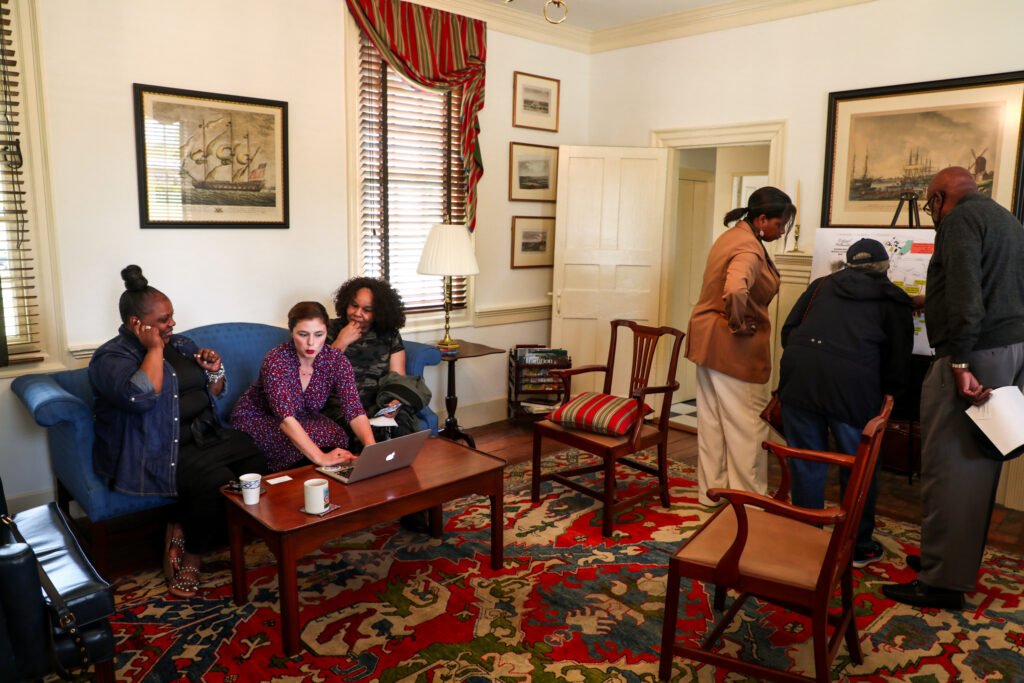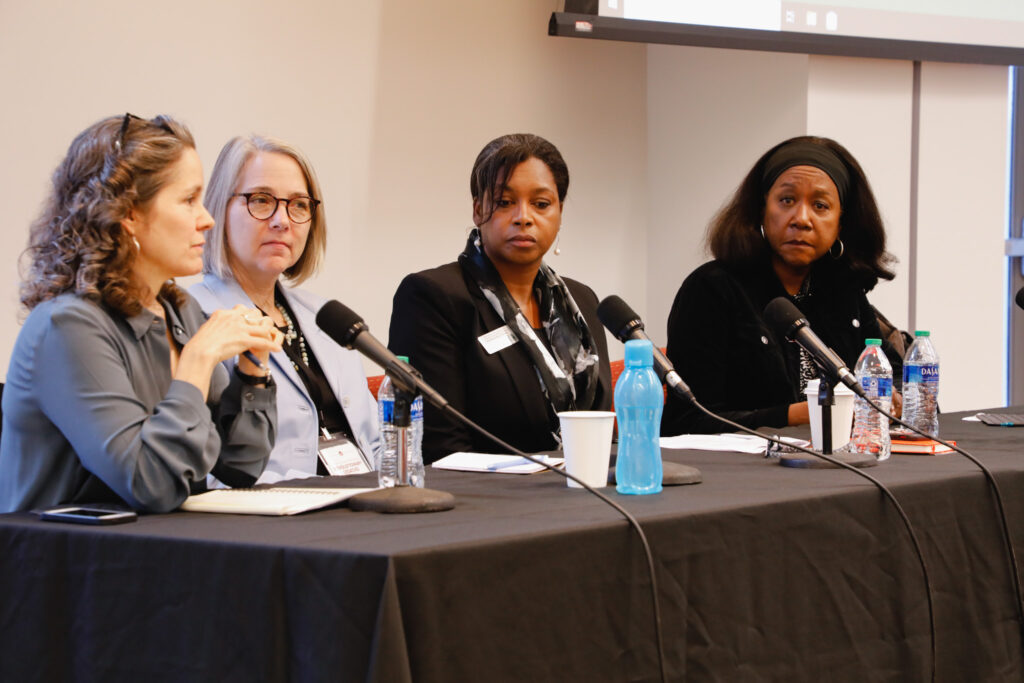While the Williamsburg Bray School (1760-1774) was active two and a half centuries ago, educational experiences can be surprisingly universal, whether that be parents’ frustrations with school administration, discrimination from teachers, or interactions among fellow students. Looking at education in Williamsburg both past and present leads to reflections on the Bray School and its operations. Sources that exist about the Bray School are not written by students themselves, and we are often left to guess exactly what their thoughts and feelings were, as well as what everyday life at school looked like. As I listened to oral histories from the Williamsburg Documentary Project, and I reflected on my own educational experiences, it’s clear that while education in Williamsburg has changed significantly since the Bray School, certain aspects of education remain timeless.
In addition to completing research at the Bray School Lab, I am also a student assistant in William & Mary’s Special Collections in Swem Library. In this position, I’ve encountered several people who have asked questions about the Bray School and the materials that William & Mary has related to the school. Evidently, this is an interesting topic for both members of the public and the scholarly community. William & Mary’s holdings of Williamsburg Bray School records are not always what people are expecting, especially considering that we do not hold the original documents connected to the school. This was one reason I started to work in the Lab to create an annotated bibliography, which compiles a variety of sources that focus on the history of African American education in Williamsburg, tracing the history of not only the Bray School, but how educational systems have evolved.

When we think of records, we often imagine written documents, but historical sources are much richer than just the written record. Because of discrepancies in literacy and the colonial nature of archives, it is important to value other mediums as much as these traditional sources. Within the Bray School annotated bibliography, oral histories provided a valuable perspective, and the possibilities for sources go much further beyond as well, including archaeology and examining archival silence. The variety of sources in the annotated bibliography is something that I found rewarding to annotate, and this variety is also important for a public-facing historical bibliography. I found it interesting to listen to oral histories in William & Mary’s collections that connect to different experiences people had with desegregating Williamsburg public schools, as well as the effect of Colonial Williamsburg’s reconstruction on African American education. With the variety of experiences and the depth of each interview, it was difficult to narrow down the whole collection to only three representative interviews for the annotated bibliography.
Listening to these oral history interviews allowed the personalities of the narrators to shine through, especially when multiple people were interviewed at once. Listening to the James City Training School story circle, I felt like I was in the room with this group of people. Usually, oral histories involve one narrator and one interviewer, but this interview involved a group of three people in conversation with each other. They reminisced about student activities and organizations, and they provided a vivid image of the James City Training School’s layout. These former students also discussed topics like integration and relations with the nearby Matthew Whaley School, as well as losing their school as a result of the expansion of Colonial Williamsburg. It is vital to preserve these perspectives in order to provide a more holistic picture of Williamsburg’s history in the context of the Bray School and beyond.

Another vital piece of this bibliography is its accessibility; all the sources included are accessible either online or through Swem Library. Swem Library is open to both students and the public, so anyone who is interested in learning about the Williamsburg Bray School can visit the library and have access to all of these sources. For those who may be more geographically removed, the bibliography also includes several links to online sources, allowing them to still have a comprehensive look at the Williamsburg Bray School.
No source exists in isolation, which is why understanding history from various time periods and sources is incredibly vital to historical research. In research regarding minority groups, traditional written sources may be few and far between, especially those written by community members themselves. Therefore, it is vital to approach this research from all angles, including so-called non-traditional sources like oral histories or stories that were recorded well after an event occurred. Reflecting on how education has evolved, I would encourage everyone to consider how their educational experiences may have been similar to those of students at the Bray School. Understanding some of those daily feelings may help fill in the blanks about what their experiences were like, and unexpected sources can help to facilitate these reflections.
Cecilia Weaver ’24
History













